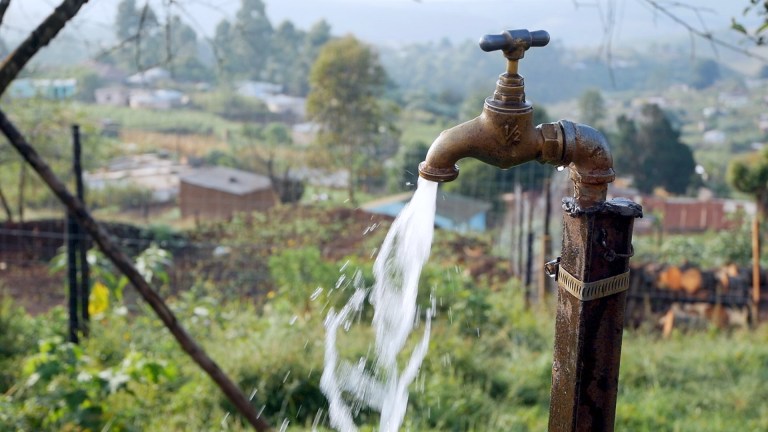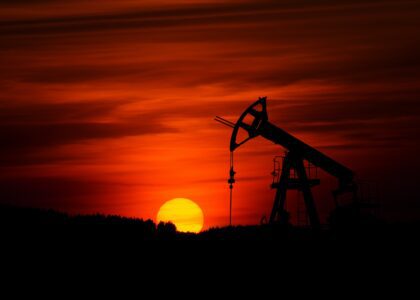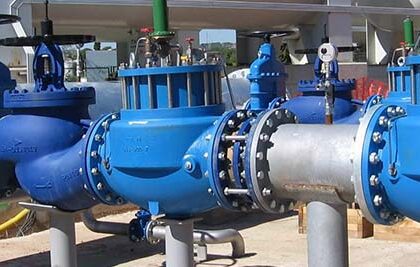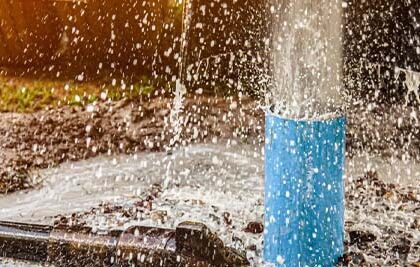Hydrology teaches us that the amount of water on Earth is constant. However, its geographical and temporal distribution is not. Also, the water’s quality is not the same worldwide, often presenting itself in a non-portable state. The reasons for this uneven distribution are both natural and man-made. Ultimately, therefore, the available resources must be used sparingly. This makes Sustainable Water Use Efficiency (SWUE) a fundamental and critical area requiring attention.
Sustainable Water Use Efficiency (SWUE) can be defined as a perpetual resolute involving the careful utilization of the available water in a manner that achieves the best possible benefit per unit of water.
The careful utilization of water can be a result of mere behavioral change such as turning off the water while you brush your teeth, adoption of new and improved technology e.g. water-efficient fixtures such as toilets and washing machines, or mandatory legal requirements.
In this article, I propose two major objectives to guide actions if we are to achieve SWUE.
- Ensure unwavering conservation of the natural vegetation on one hand, and undertaking robust afforestation on the other.
- The abstraction, treatment, and usage of water should be done in such a way that the best possible benefit per unit of water is achieved while conserving aquatic ecosystems.
Firstly, it is important to appreciate the undisputable significant role played by the natural environment, especially the trees and aquatic animals in the water cycle. The trees and plants, together with water surfaces such as oceans, lakes, and rivers are responsible for evapotranspiration which in turn is responsible for rainfall formation. On the other hand, the aquatic ecosystems (plants and animals therein) are regulators of water quality and quantity.
Without the conservation of these important aspects of the environment, the hydrological cycle is likely to be affected with possible adverse effects such as the drying up of rivers, and substantial reduction in area and depths of lakes while replenishing of underground water might greatly reduce or cease. On the other hand, severe events such as floods and droughts, and consequential destruction could result.
It, therefore, follows that for any water use efficiency measures to function; the primary sources of water MUST first be conserved or even improved through such measures e.g. appropriate afforestation. The term appropriate is here emphasized because, over time, experience has shown that certain tree species are more suited for certain environments if sustainability of water is to be achieved.
So then, how can we achieve sustainable water use efficiency? To achieve SWUE, I propose five major pathways that play interlinked roles. These are:
- Work toward and promotion of currently under-exploited sources of water
- Policy and Advocacy
- Behavioural change
- Use of technology
- Application of scientific knowledge
Work toward and promotion of currently under-exploited sources of water
World over, the most exploited sources of water are freshwater sources, rivers, and groundwater largely owing to the ease of abstraction and treatment. The other sources of rainwater harvesting, seawater, and fossil groundwater are largely ignored for varied reasons. For fossil groundwater and seawater, their abstraction and/or treatment is very expensive, understandably so. However, rainwater harvesting; which is affordable has largely been ignored. Yet, if implemented could help relieve a lot of pressure on the surface freshwater sources.
Going forward, advanced technology driven by the application of scientific principles should be pursued to make the abstraction and treatment of seawater and very deep groundwater more affordable.
Rainwater harvesting
Rainwater harvesting can be defined as the process of collecting, conveying, and storing rainwater for later use. This rainwater can be collected from such surfaces as rooftops, paved surfaces, or rocky catchments. It can be stored in ground-level tanks, and underground constructed tanks as well and used to recharge aquifers.
Although rainwater is used to replenish aquifers through subsequent percolation and infiltration processes, contributes to the river/stream flow consequently contributing to the volume of water in lakes, seas, and oceans, it should be noted that a lot of it collects in aquifers that are not readily exploited for human use. If this portion that is stored in those not-readily exploitable aquifers was obstructed, harvested, stored, and used, it would relieve the freshwater sources of a lot of pressure. It is worth noting that while rainwater harvesting is relatively cheap it is largely ignored.
Therefore, a deliberate effort aimed at the promotion of rainwater harvesting encompassing policy and advocacy, aspects of behavior change, and technology is needed.
Waste-water treatment for re-use
Wastewater is increasingly being viewed as a resource rather than a waste! In this regard, the treatment of wastewater is now focussed on resource (energy and water) recovery. In this regard, scientists are on a discovery course aimed at the development of relevant technologies that can ably treat wastewater generated when water is used for various purposes to suitability for re-use without first releasing it to the environment. This way, a cycle is maintained and this ultimately relieves freshwater bodies of pressure. Also, where the technology involved in the abstraction and treatment of water is quite expensive, say sea water, money can be saved and devoted to other needs. But this is very key where alternative sources are either expensive or non-existent.
The technologies involved can either be remote, say used at household or institutional level but can also be centralized where wastewater is collected and treated at a single treatment facility and re-channeled to the system for various uses. While research into this area is still ongoing, in some countries e.g. Singapore and Israel the level of deployment of the already tested systems is very commendable.
On the other hand, however, it is also important to note that when the universal collection of wastewater and its subsequent treatment to acceptable standards is then released to the environment it contributes to environmental flow which is equally good. However, collection and subsequent treatment of wastewater in most developing countries are still very wanting. And neither have they embraced remote wastewater treatment for re-use. This needs to be worked if sustainable water use efficiency is to be achieved.
Sustainable physical water loss management
Physical water loss is defined as the water lost in various water distribution networks the world over as leakages, bursts, and tank overflow up to a customer’s utility meter. However, in light of sustainable water use efficiency, we necessarily have to add to this volume the amount of water lost after a customer’s water utility meter as leakages, overhead tank overflows, and through the leakage of faulty toilets.
This is an already treated resource to standards that are lost and yet could have been used to supply customers who currently lack supply in intermittent systems but could also relieve freshwater bodies of additional pressure. Although technology innovations aimed at curbing this loss such as geophones, ground penetrating radars, deployment of sensors, and smart metering are already deployed to play a key role in reducing this loss, their universal deployment needs to be tracked. Additionally, further technological development in this area is still needed. On the other hand, the regulation around this area especially aimed at compelling water supply utilities to reduce this physical loss to acceptable and economically viable volumes is needed in countries where it is currently absent while strengthening of the same is needed where feasible.
Technology
Considering the two set objectives, technology will play a key role in assessment, monitoring, and regulating water usage. In the effort to ensure sustained environmental protection, technology will be needed to monitor and give fast feedback regarding the status of such aspects of the environment as wetlands, swamps, and gazetted forests among others. In this regard, remote sensing should be used to achieve this goal. For instance, through the integration of software tools with the capability of mapping, programming, and relaying information, deforestation, swamp reclamation, and wetland destruction attempts can be quickly thwarted through a signal warning and consequent immediate deployment.
On the other hand, technology is already playing its role in the monitoring of water resources, for instance, the depth/width of lakes and oceans, flow of rivers and aquifer recharge trends as well as monitoring of other properties of these water bodies/resources. Going forward, universal deployment of these technological packages and tools should be fast-tracked to ensure all water bodies/resources are monitored. The processing and analysis of the data collected, its dissemination, further analysis and research, and consequent decision-making should be done very fast.
Furthermore, technological packages and tools are already being deployed in the management of water’s end-use. As an example, the amount of water used for domestic uses e.g. flushing of toilets and handwashing is being regulated while water supplied to crops is being regulated through analytical and trigger systems, aimed at achieving the possible benefit per unit of water.
This is being done through the automation of water supply and irrigation systems as well as other uses. With this, demand analysis and management of water for all uses is being done. This is a commendable step thus far. While more fine-tuning is still needed, the universal application of the already tested systems should be explored. Examples of these systems include smart water metering, the use of sensors in the management of water supply systems, leakage detection equipment such as geophones and ground-penetrating radar, etc.
Policy and Advocacy
Considering the above objectives, a conclusion can be made that a lot of focus has been put on the policy and advocacy of objective one which is good. However, more studies need to be made and if there are any gaps in this regard, they be filled especially in the quality of laws and guidelines and also their enforcement.
However, as regards aspects of abstraction, treatment, and usage of water in such a way that the best possible benefit per unit of water is achieved while taking care of water needs of water users other than humans, more is still needed in as far regulation and advocacy are concerned.
For instance, although many countries have incorporated the aspect of minimum environmental flows, this needs further popularisation and universal consideration. Considering the current gap, going forward, there is a need for formulation of area-specific regulation and guidelines at all levels i.e. international, regional, and national.
On the other hand, although contamination of and encroachment on water resources is punishable in almost all countries, serious gaps exist between policy and implementation and this needs serious review.
As regards advocacy towards sustainable water use efficiency, the area has largely been left to well-wishers with main-stream government and government agencies playing a dormant role. In my view, the mainstream government needs to take it up as a serious issue that forms part of its day-to-day business, especially regarding the education of the masses on the promotion of water use efficiency.
Application of scientific knowledge and Behaviour change
The above three aspects will largely be guided and enabled by the use of scientific principles and ensuring behavior change.
For instance, scientific principles will be needed to guide every future endeavor aimed at achieving sustainable water use efficiency, be it research, technology, or regulation.
On the other hand, unless human behavior is adjusted and aligned to the tenets of sustainable water use efficiency, the endeavor is likely to remain futile.
From the foregoing, it can be concluded that more dedicated effort is still needed if we are to achieve sustainable water use efficiency. And yet, this is not optional but rather a MUST. If timely interventions are not sought and implemented, going by the current trends, over-exploitation of freshwater sources to the extent of drying up in some parts of the world, while the causing of severe events such as floods and droughts is very likely.











